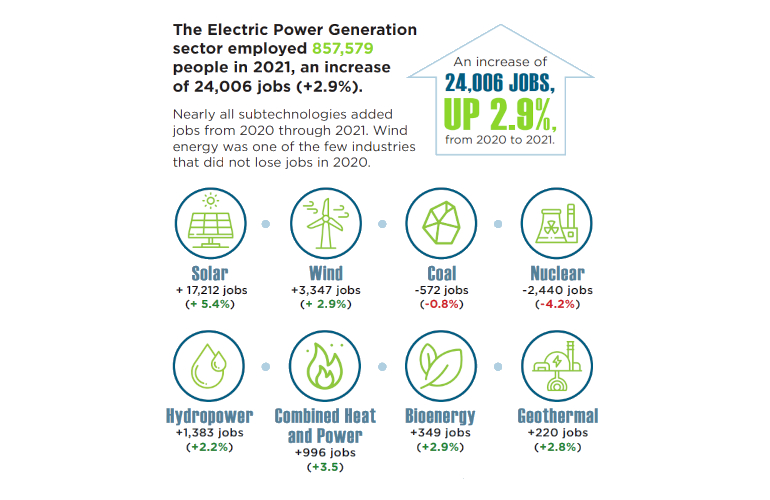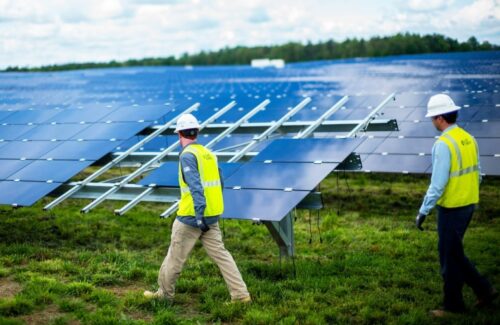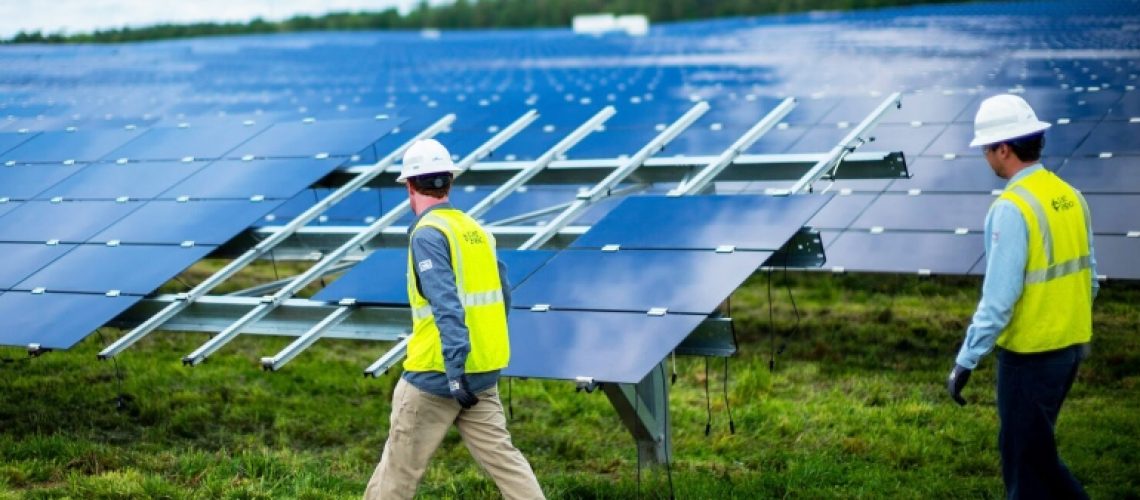The U.S. Department of Energy released the 2022 U.S. Energy and Employment Report (USEER), a study of employment across multiple sectors of the energy industry.
 The report covers 2021 and found that the energy sector experienced positive job growth, increasing 4.0% from 2020 to 2021, outpacing overall U.S. employment, which climbed 2.8% in the same period. Overall, the total number of energy jobs increased, from 7.5 million in 2020 to more than 7.8 million in 2021, after a steep decline in 2020. There are more than 3 million jobs, 40% of total energy jobs, that support reducing U.S. emissions to zero across several sectors.
The report covers 2021 and found that the energy sector experienced positive job growth, increasing 4.0% from 2020 to 2021, outpacing overall U.S. employment, which climbed 2.8% in the same period. Overall, the total number of energy jobs increased, from 7.5 million in 2020 to more than 7.8 million in 2021, after a steep decline in 2020. There are more than 3 million jobs, 40% of total energy jobs, that support reducing U.S. emissions to zero across several sectors.
“Amidst the unique challenges of a nation coming out of a global pandemic, America’s energy sector stands out with considerable job growth across nearly all industries,” said U.S. Secretary of Energy Jennifer M. Granholm. “DOE’s USEER report shows that jobs critical to our clean energy transition are on the rise and poised for continued expansion thanks to the historic investments from the President’s Bipartisan Infrastructure Law.”
The 2022 USEER, originally launched in 2016, covers five major energy industries: electric power generation; motor vehicles; energy efficiency; transmission, distribution, and storage; and fuels. The findings show that all industries, except for fuels, experienced net-positive job growth in 2021.
Sectors with notable job growth:
- Electric vehicle jobs increased by 26.2%, adding 21,961 new jobs.
- Hybrid electric vehicle jobs increased 19.7%, adding 23,577 new jobs.
- Solar energy jobs increased by 5.4%, adding 17,212 new jobs.
- Wind energy jobs increased by 2.9%, adding 3,347 new jobs.
- Energy efficiency jobs increased by 2.7%, adding 57,741 new jobs.
- Transmission, distribution, and storage jobs increased by 1.9%, adding 22,779 new jobs.
The 2022 USEER workforce and demographic analysis shows that 10% of workers in the energy sector are represented by a union or covered by project labor agreement, compared to 6% within the private sector nationally. The energy workforce also has a higher concentration of veterans than the U.S. workforce average (9% vs. 6%).

Credit: Duke Energy
Despite job growth, energy jobs have still not recovered to pre-pandemic, 2019 levels. While nearly all jobs in net-zero aligned areas experienced positive growth in 2021, only a few industries, including wind energy, electric vehicles, and hybrid-electric vehicles, had more jobs in 2021 than before the pandemic. Additionally, nuclear electricity, coal, and petroleum jobs decreased in 2021.
The USEER demonstrates that achieving an equitable transition to a net-zero emissions economy-wide by 2050, with a diverse workforce, will require additional public and private investments in the clean energy sector. It will also require commitment from industry to support workers, by creating stable and secure good-paying jobs and investing in education and training programs to help workers, of all backgrounds, advance their clean energy careers.
The 2022 USEER is based on surveys of approximately 33,000 private energy businesses combined with public labor data to produce estimates of employment and workforce characteristics.
The full report, state report, and fact sheet can be found at www.energy.gov/useer.



